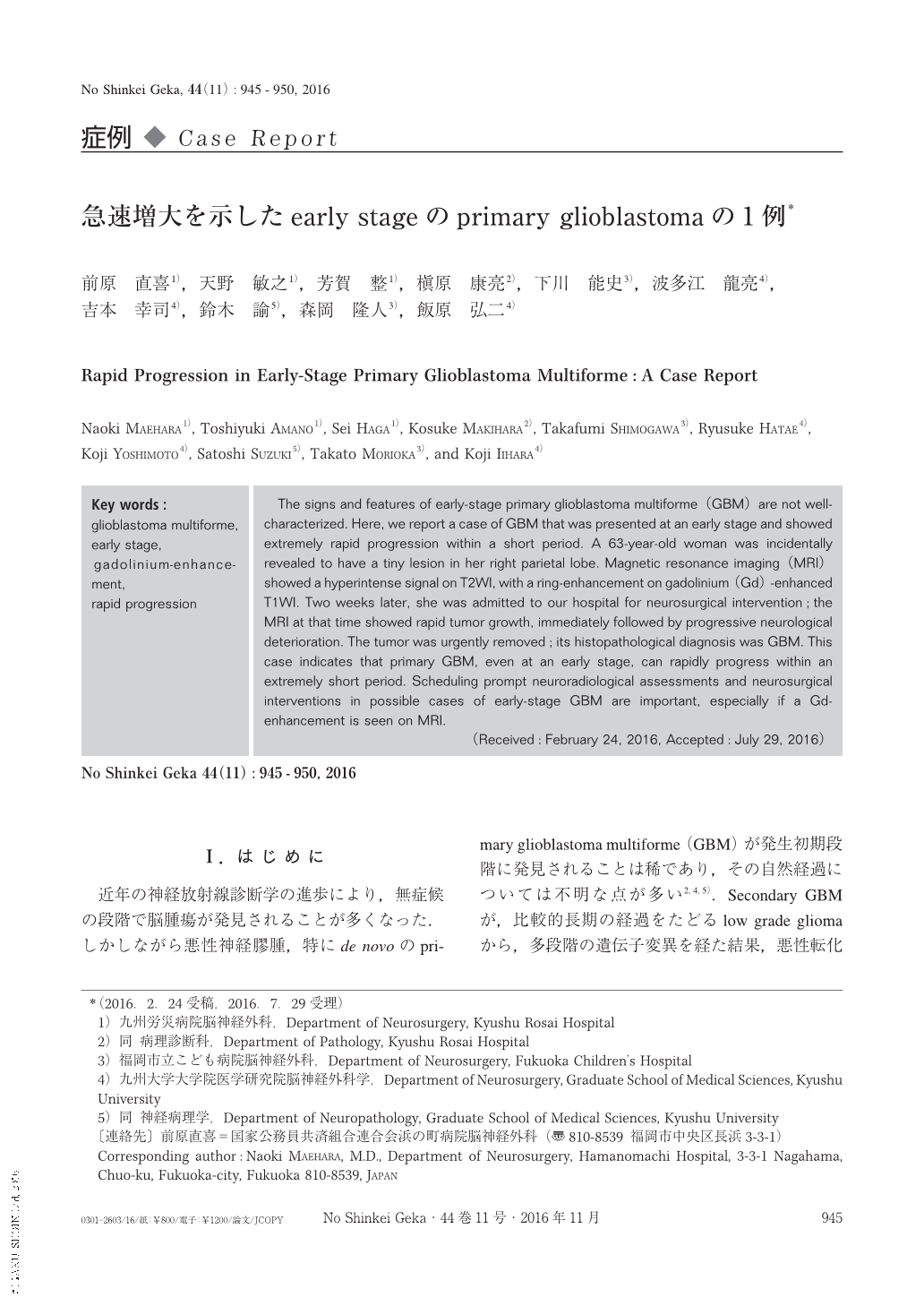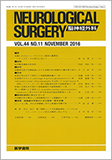Japanese
English
- 有料閲覧
- Abstract 文献概要
- 1ページ目 Look Inside
- 参考文献 Reference
Ⅰ.はじめに
近年の神経放射線診断学の進歩により,無症候の段階で脳腫瘍が発見されることが多くなった.しかしながら悪性神経膠腫,特にde novoのprimary glioblastoma multiforme(GBM)が発生初期段階に発見されることは稀であり,その自然経過については不明な点が多い2,4,5).Secondary GBMが,比較的長期の経過をたどるlow grade gliomaから,多段階の遺伝子変異を経た結果,悪性転化を引き起こして生じるのに対し,primary GBMは初期の段階からGBMとしての生物学的特徴を持って発生し,急速に増大してくることで,極めて短期間の間に症候性のGBMとして発見されることがその原因の1つと考えられる.
今回われわれは,わずか2週間の経過で急速に増大し,激烈な臨床経過をたどったprimary GBMの症例を経験したので,文献的考察を加えて報告する.
The signs and features of early-stage primary glioblastoma multiforme(GBM)are not well-characterized. Here, we report a case of GBM that was presented at an early stage and showed extremely rapid progression within a short period. A 63-year-old woman was incidentally revealed to have a tiny lesion in her right parietal lobe. Magnetic resonance imaging(MRI)showed a hyperintense signal on T2WI, with a ring-enhancement on gadolinium(Gd)-enhanced T1WI. Two weeks later, she was admitted to our hospital for neurosurgical intervention;the MRI at that time showed rapid tumor growth, immediately followed by progressive neurological deterioration. The tumor was urgently removed;its histopathological diagnosis was GBM. This case indicates that primary GBM, even at an early stage, can rapidly progress within an extremely short period. Scheduling prompt neuroradiological assessments and neurosurgical interventions in possible cases of early-stage GBM are important, especially if a Gd-enhancement is seen on MRI.

Copyright © 2016, Igaku-Shoin Ltd. All rights reserved.


